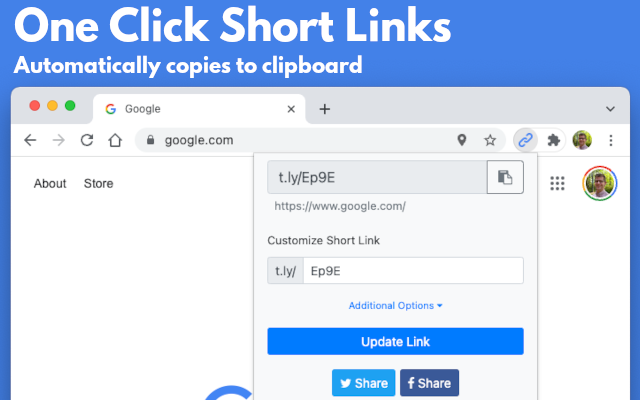
What is a URL?
Have you heard the term URL and did not quite understand what it meant? If so, then this blog post was written just for you! URLs are an important part of managing websites and digital campaigns, but they can be confusing if you’re not familiar with them. This blog post will define a URL and how it works in practice. We’ll also explore some best practices for creating effective URLs that will help optimize your website performance. So buckle up, and let’s dive into understanding what a URL is!
Introducing URLs – What they are and why you should care
Have you ever noticed the strange combination of letters and symbols in your browser’s address bar? Those are URLs, and they are an essential part of browsing the internet. URLs, or Uniform Resource Locators, are the unique addresses that identify a webpage on the internet. They allow you to access websites, web pages, and files with just a few clicks. Understanding URLs can be intimidating at first, but once you grasp the basics, you can use them to navigate the internet more effectively. Knowing how to read a URL, identify trustworthy sources, and share links with others can greatly enhance your online experience. So, whether you’re a seasoned internet user or a newcomer, it’s worth taking a moment to learn more about this essential component of the web.
Brief URL History
The history of the URL, or Uniform Resource Locator, traces back to the early days of the World Wide Web when a need arose to standardize the way resources were located and accessed online. In 1990, Tim Berners-Lee, the inventor of the World Wide Web, introduced the concept of URLs as a means to provide a consistent way to address web content. The original URL format included the protocol (HTTP), the domain name, and the path to the resource. As the web evolved, so did the complexity and diversity of URLs. In the mid-1990s, the URL structure was extended to include parameters, allowing users to pass information to servers for dynamic content generation. The introduction of secure connections led to the “https://” protocol, ensuring encrypted data transmission. Over time, the URL’s role expanded beyond web pages, incorporating email addresses, file transfer, and more. Despite these advancements, the core principles of URLs—providing a standardized way to locate and access digital resources—have remained constant, shaping the web into the interconnected and accessible realm we navigate today.

The Anatomy of a Web Link: Exploring the Components of a URL
URLs can seem like a string of random characters with no rhyme or reason if you’re not tech-savvy. However, understanding the structure of a URL can actually be quite straightforward. At its core, a URL is broken down into three parts: the protocol, the domain name, and the path. The protocol is what tells the browser how to access the resource. This is usually either HTTP or HTTPS. The domain name is the unique identifier for the website, while the path tells the server which specific resource you’re looking for. By understanding the structure of URLs, you’ll be better equipped to easily navigate the vast expanse of the internet.
- HTTP (Hypertext Transfer Protocol)
- HTTPS (Hypertext Transfer Protocol Secure)
- FTP (File Transfer Protocol)
- FTPS (File Transfer Protocol Secure)
- SMTP (Simple Mail Transfer Protocol)
- www.example.com
- subdomain.example.com
- blog.example.com
- shop.example.com
- .com (commercial)
- .org (organization)
- .net (network)
- .edu (educational institution)
- .gov (government)
- /articles/
- /products/electronics/
- /about/contact-us.html
- ?category=tech
- ?search=query
- #section-3
- #top
How to create your own Branded URLs
Do you want your website to have a memorable and distinctive website address? If so, creating your own short urls is the way to go! The good news is that it is much easier than you might think. All you need is a domain name, which is the unique address of your website on the internet, and a T.LY account to manage your short links. With T.LY and a bit of creativity, you can have URLs that perfectly represent your brand and capture the attention of your target audience. So what are you waiting for? Create your own URL shortener today and take your links to the next level!
Common URL mistakes to avoid when creating links
Creating links is essential to building a website, but it’s important to avoid common mistakes that could undermine your hard work. One of the most significant pitfalls to watch out for is using lengthy URLs that are difficult for users to remember or link to. This can cause your page to be less accessible or discourage linking from other websites. Instead, opt for shorter, more concise, user-friendly URLs that are easy to copy and paste. Additionally, avoid using special characters or spaces in your URL that can cause errors and break the link. By following these tips, you can help ensure that your website is easy to navigate, shareable, and accessible to all.
URLs are the Building Blocks of the Internet
URLs, or Uniform Resource Locators, serve as the fundamental building blocks of the internet because they provide the essential mechanism for identifying, accessing, and sharing resources across the vast digital landscape. Here’s why URLs are considered the cornerstone of the internet:
1. Resource Identification: URLs uniquely identify each resource on the internet. Whether it’s a web page, image, video, document, or any other digital content, URLs serve as the digital address that allows users and computers to locate and retrieve the specific resource they’re looking for.
2. Navigation and Linking: URLs enable seamless navigation between different web pages and websites. Hyperlinks, which are essentially URLs embedded within content, connect various online destinations, forming an interconnected web of information that users can explore simply by clicking links.
3. Uniformity and Standardization: URLs provide a standardized format that ensures consistency in how resources are addressed. This uniformity simplifies the process of sharing, referencing, and accessing information across different devices, platforms, and browsers.
4. User-Friendly Interaction: URLs allow users to interact with digital resources in a user-friendly way. Instead of having to remember complex numerical IP addresses for each website, users can rely on easily recognizable domain names to access their desired content.
5. Information Retrieval: Search engines and online databases use URLs to index and retrieve information. Search engines rely on URLs to locate relevant resources and present them in search results when users perform searches.
6. Access to Services: Beyond web pages, URLs are used to access various online services and functionalities. For instance, URLs are used to access APIs (Application Programming Interfaces) for data exchange, download files, and interact with email and other communication services.
7. Deep Linking: URLs allow deep linking, which means linking directly to specific sections or content within a webpage or app. This capability enhances user experience by allowing them to access the exact information they need, saving time and effort.
8. Sharing and Collaboration: URLs facilitate easy sharing of content. By copying and pasting a URL, users can instantly share resources with others, enabling collaboration, dissemination of information, and social interactions on the web.
9. Evolution and Innovation: As technology evolves, URLs adapt to incorporate new features, such as parameters, queries, and fragments, to support dynamic content, analytics, and user personalization. This adaptability has allowed URLs to remain relevant and effective over time.
URLs provide the essential mechanism that allows the internet to function as a vast, interconnected network of information and services. Without URLs, the internet as we know it today would lack structure, accessibility, and the ability to connect users with the wealth of online content and resources.
In conclusion, this blog post has been your comprehensive guide to understanding the world of URLs and their pivotal role in shaping the digital landscape. If the term “URL” left you puzzled before, you’re now equipped with a clear understanding of its significance. From the foundational concepts of URLs to their evolution over time, we’ve covered a journey that spans the birth of the World Wide Web to its current interconnected state. The anatomy of a URL is no longer a mystery, as you now recognize the protocol, domain name, path, and other components that make up these essential digital addresses.
Furthermore, the power of creating your own branded URLs has been unveiled, along with valuable tips to avoid common pitfalls when crafting links. You’ve also delved into the reasons why URLs are aptly considered the building blocks of the internet. Their role in resource identification, navigation, uniformity, user interaction, information retrieval, and much more has been illuminated.
As you venture further into the realms of the web, remember that URLs are your trusty companions, guiding you to the information, entertainment, and opportunities you seek. With this newfound knowledge, you’re poised to confidently navigate the internet, whether you’re a casual user or a digital professional. Embrace the power of URLs and harness their potential to enhance your online experiences. So, next time you spot a URL in your browser’s address bar or share one with a friend, you’ll do so with an appreciation of the intricate digital architecture that it represents.
Related Posts
Tim Leland
Ready to improve how you manage links?
T.LY URL Shortener makes long links look cleaner and easier to share! Add your own Custom Domains to personalize your brand. Create Smart Links to customize a URL's destination. Generate QR codes to promote your business.
Sign Up for Free







